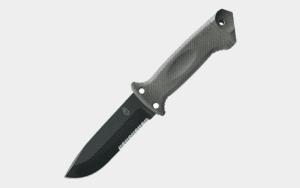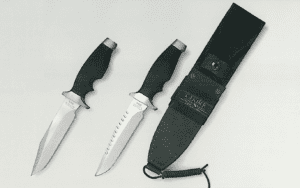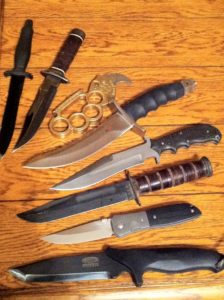Please note that some of the links below are affiliate links, and I will earn a commission if you purchase through those links. I either personally use or have personally verified all the products listed below and recommend them because they are companies that I have found helpful and trustworthy. I am also a participant in the Amazon Services LLC Associates Program, an affiliate advertising program designed to provide a way for websites to earn advertising revenues by advertising and linking to Amazon.com.
So this is going to be your first big knife purchase and you’re looking for that perfect tactical, survival or hunting knife. It’s easy to get caught up in the details so try to keep things simple, you can always get more complicated the more you use a knife and learn what you like and don’t like. Here’s my top 5 tips to put you on the right path when picking the perfect survival knife that’s right for you.
5. Drop point, Bowie, Tanto? What does it all mean?
I personally love a Bowie style knife, it’s also called a clip point. It’s great at stabbing and also great at detail work because of the way the tip is built.
A drop point blade is actually a better design for survival or hunting applications. It lends itself better for camp chores and for skinning.
A tanto blade is mostly a tactical blade. The blade is very strong and is perfect for stabbing things.
Are there other blade types? Yes, of course. spear, reverse tanto, sheepsfoot, etc. But these 3 I mentioned are the most popular and are a great starting point for a beginner.
4. Black, Stainless Steel, Powder Coated… How do you choose a blade finish.
Whatever coating is on a blade will eventually wear off if the knife is used a lot, but you’re going to have to use it A LOT.
However, in survival situations you don’t necessarily want to advertise your location by light gleaming off of your shiny new stainless steel blade.
Black or powder coated blades look nice and will help keep the blade from rusting and a shiny blade can double as a mirror, so it really depends on your specific application.
3. Pick your handle type.
Are you going to be using your knife in the cold or in wet weather? You may want to go with some type of rubberized or plastic handle like micarta.
If you’re more into the beauty of the knife you may want to get one made of bone, horn, or some exotic wood. Stacked leather is always a nice option too, but that can rot over time in wet weather.
2. Serrated or straight blade?
Many knives come with a small area of serration either on the top of the spine or usually on the blade close to the handle. This is great for quickly cutting rope, or tinder for a fire, or anything else you may need to use a sawing motion for.
But this area is hard to sharpen, especially for a novice. It takes special sharpening stones to keep the edge tuned up.
A straight blade knife is easier to keep sharp and some knives even come with an integrated sharpener in the sheath.
And the number one tip… SIZE, bigger is not always better.
A knife with a 3-5 inch blade is about all the knife you will ever need in any situation. That will still make the knife around 7-10 inches long.
Of course, you could always carry several knives at the same time like I do. Then all your bases are covered.
Bonus Tip: Don’t get too caught up in the steel the blade is made from. Yes, some stay sharper longer than others and yes, some will rust faster than others.
But you are going to have to maintain whichever knife you choose no matter what steel it is made from.
Plus, it will give you something to do when you are sitting around the fire at night listening for zombies in the distance.
If you want more information on the Best Classic Survival Knives Available read this article.



